Myanmar’s junta used to lock journalists in dogs’ cages
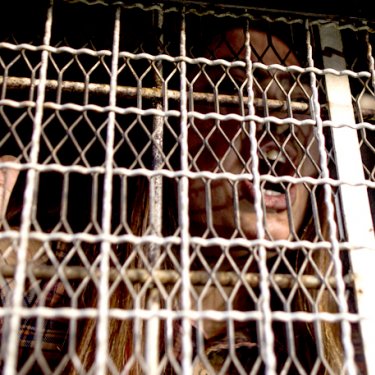
As the crackdown increases in Myanmar, Reporters Without Borders (RSF) voices concern at the possibility that the new military dictatorship will resort to the terrible methods of persecution that were used against media and journalists by the junta that ruled from 1967 to 2011.
The noted journalist Win Tin spent his life campaigning for democracy and press freedom in Myanmar and paid a high price for it: 19 years behind bars. He was accused of being a communist and was imprisoned in 1989 in the notorious Insein prison in the suburbs of the main city, Yangon.
Tortured and ill-treated
During his 7,000-day imprisonment he was literally treated like a dog in the true sense of the term: he was held in a cage normally used in kennels. He had no bedding, was deprived of food and sleep and denied medical care. For most of the time, he was held in solitary confinement.
Win Tin lost most of his teeth as a result of many torture sessions. He also lost a testicle in a botched hernia operation. He suffered two heart attacks while in prison. Access by the Red Cross to his cell was routinely refused. Today, most of the arrested journalists are held in the same prison.
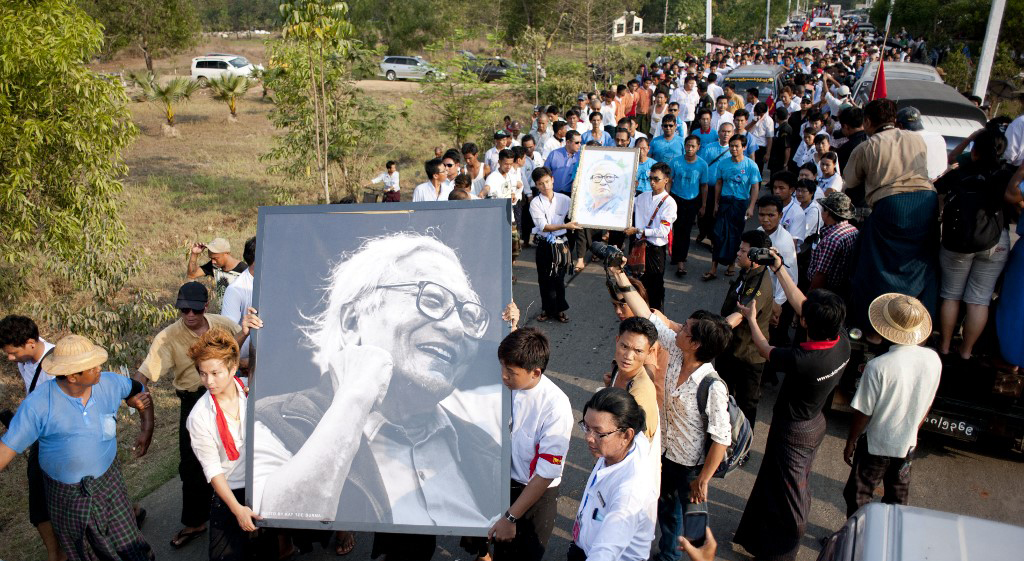
Supporters gather around the coffin of journalist Win Tin during his funeral ceremony in Yangon on 23 April, 2014 (photo: Ye AungThu / AFP).
“Let us remember that, under Myanmar’s previous ruling junta, journalists were locked up in dogs’ cages,” said Daniel Bastard, the head of RSF’s Asia-Pacific desk. “Since the February coup, Burmese generals have shown all the signs of a return to the squalid methods they used to persecute journalists and media organisations for almost half a century, between 1967 and 2011.
"The international community must be aware of the seriousness of the state of affairs the Burmese military is in the process of imposing and must take practical steps to prevent a revival of the Orwellian regime of the past. History cannot, and must not, repeat itself.”
Record number of imprisonments
According to RSF figures, at least 20 journalists were held in Insein prison at the time the previous junta was dissolved in February 2011. The correctional centre, built by the British, had become a symbol of repression by the military which used it for physical and psychological torture.
Sentences were severe. In 2010, the blogger-monk Oakkan Tha was sentenced to 15 years’ imprisonment for “anti-electoral activities” when all he did was send information about the election taking place to the Thailand-based Burmese outlet Mon News Agency.
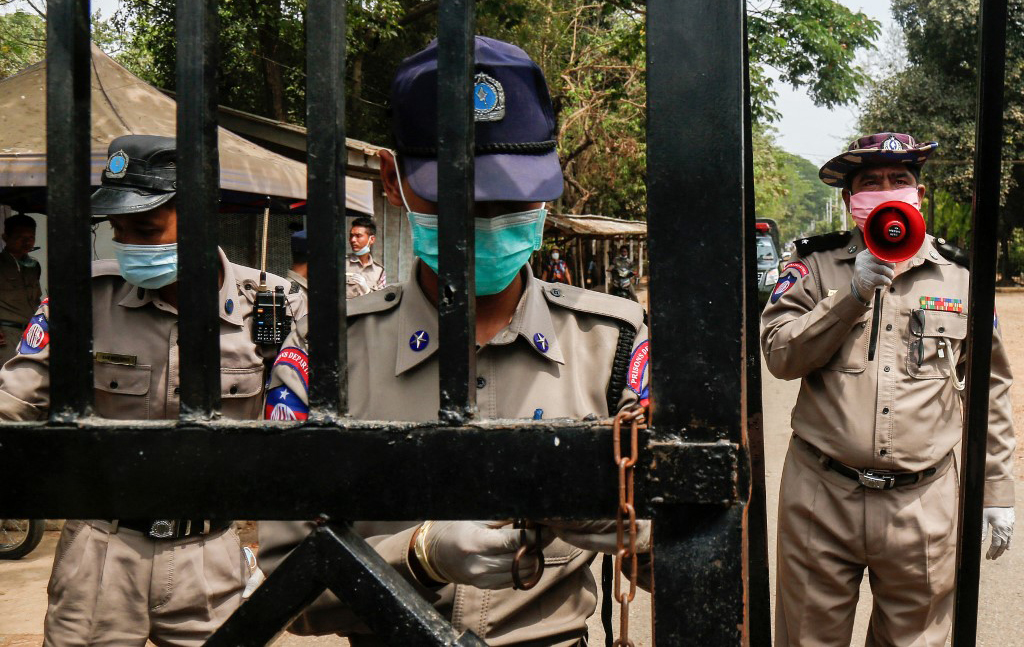
A view of the infamous Insein prison, in Yangon (photo: Sai Aung Main / AFP).
A year earlier, Nyi Nyi Tun, editor of the Kantarawaddy News Journal, received a 13-year prison sentence during which he was severely tortured. He was found guilty under article 505 of the criminal code which penalizes the dissemination of false information designed to disrupt public order.
Eleven years later, in 2021, the same article was invoked by the current ruling junta to keep a dozen journalists arrested since 28 February in custody, most of them in Insein prison.
Media outlets shut down
The junta decided to cancel the licences of five media outlets on 8 March and revived a pre-2011 practice: all the country’s privately-owned press organs were subjected to pre-publication censorship. Those that dared to publish a news item that had not been approved by the Press Scrutiny Board could be closed down immediately
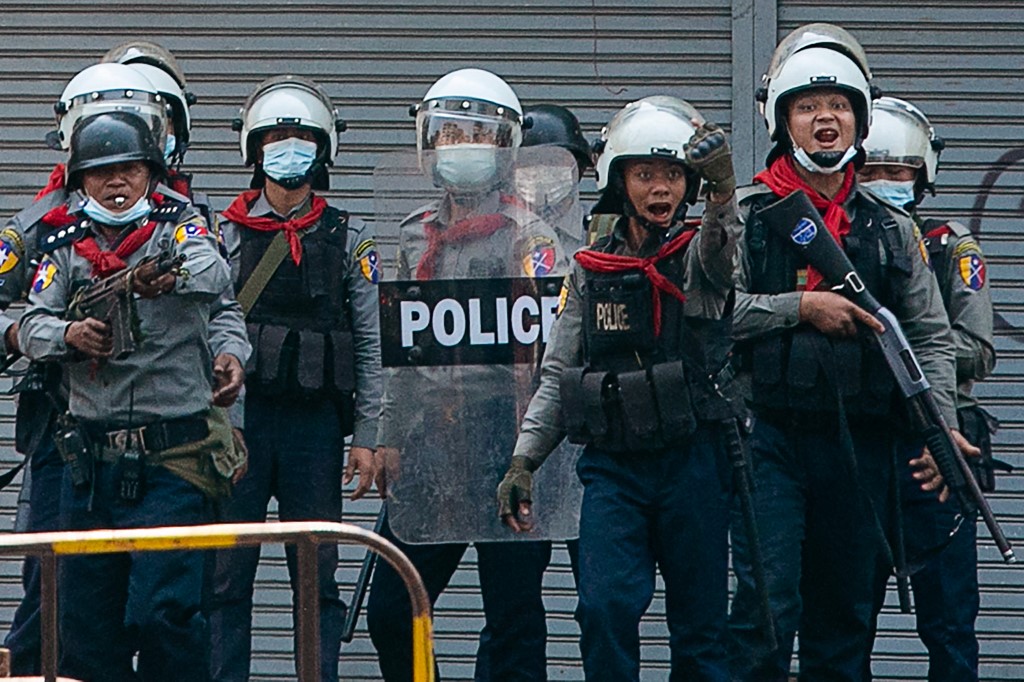
Police gesture toward protesters as security forces crack down on demonstrations against the military coup in Yangon on 28 February, 2021 (photo: Sai Aung Main / AFP).
“I’ve already spoken with some junior journalists, who asked ‘what are we gonna do in the coming days? What kind of news are we writing under the military junta?’,” independent reporter Mratt Kyaw Thu told RSF. “So I told them ‘if you want to write the news, under the military, you have to be very careful. If you touch on politics, you can be arrested at any moment’.”
Self-censorship
Many journalists who also worked under the pre-2011 junta fear a return to the Kafka-esque practices of the past. At that time, all news stories had to be sent to the Press Scrutiny Board at least a week in advance, which meant the news was entirely out of date by the time it was approved.
In 2012, the editor of the daily 7 Day News, Nyein Nyein Naing, told RSF: “We used to send our articles to the bureau on Thursday, we would get them back on Saturday, and we would make the required changes the same day.
“On Monday we sent the changed version with last minute additions, and they sent it back in the evening. It finally appeared on the following Wednesday.”
The rules prevented news organisations from tackling issues that were the least bit sensitive given the costs of making changes and reprinting newspapers and magazines.
Draconian laws
Against this background, self-censorship was the rule. It covered all topics, even the most neutral or trivial “bad news” stories such as natural disasters or the defeat of the national soccer team. This was based on the 1962 Printers and Publishers Law which allowed the Press Scrutiny Board to amend, ban or destroy any content to which it took exception.
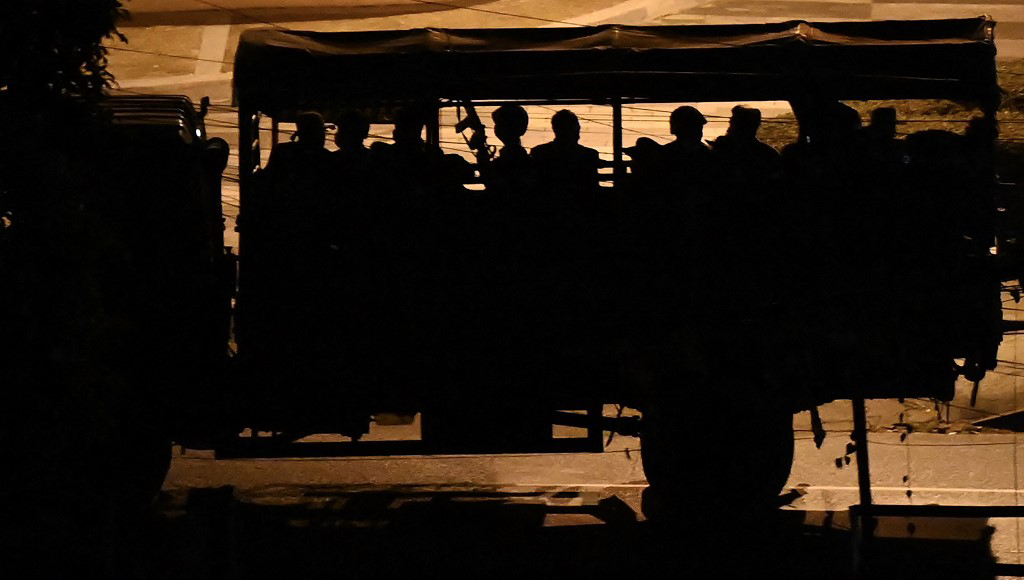
This photo taken on 6 March, 2021 shows soldiers in a military truck, amid the night-time arrests of anti-coup activists and journalists, in Yangon (photo: AFP).
In 1995, a memorandum was published defining what were considered “sensitive” topics. However, the concepts used in the document were entirely Kafka-esque. For example, “anything detrimental to the ideology of the state”, “anything which might be harmful to national unity”, “any idea or opinion which do not accord with the times”, “any descriptions which, though factually correct, are unsuitable because of the time or circumstances of their writing”. Anyone who failed to follow these rules could face seven years’ imprisonment.
Draft legislation on cyber security being prepared by the current junta, of which RSF obtained a leaked copy last month, is an ominous reminder of that memorandum. For example, it provides for the “interception, withdrawal, destruction or (account) closure” of any content on the Internet that may “cause hatred, or disrupt unity, stability and peace”. The text is version 2.0 of the 1962 Printers and Publishers Law.
When the former junta was dissolved in 2011, Myanmar was ranked 169th of 179 countries in the World Press Freedom Index compiled by RSF. In 2020 however, it lies in 139th place of 180 countries. The government faces the strong possibility that it will fall back into limbo in the Index if the generals in charge continue their headlong rush into repression.



